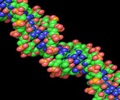Graphene, a surprisingly robust planar sheet of carbon just one-atom thick, can act as an artificial membrane separating two liquid reservoirs

"By measuring the flow of ions passing through a nanopore drilled in graphene we have demonstrated that the thickness of graphene immersed in liquid is less then 1 nm thick, or many times thinner than the very thin membrane which separates a single animal or human cell from its surrounding environment," Nature quoted lead author Slaven Garaj, a Research Associate in the Department of Physics at Harvard, as saying.
"This makes graphene the thinnest membrane able to separate two liquid compartments from each other. The thickness of the membrane was determined by its interaction with water molecules and ions," he added.
Graphene, the strongest material known, has other advantages. Most importantly, it is electrically conductive.
"Although the membrane prevents ions and water from flowing through it, the graphene membrane can attract different ions and other chemicals to its two atomically close surfaces. This affects graphene's electrical conductivity and could be used for chemical sensing," said co-author Jene Golovchenko.
"I believe the atomic thickness of the graphene makes it a novel electrical device that will offer new insights into the physics of surface processes and lead to a wide range of practical application, including chemical sensing and detection of single molecules," he added.
An electrical voltage applied between the reservoirs pushed the ions towards graphene membrane.
When the researchers added long DNA chains in the liquid, they were electrically pulled one by one through the graphene nanopore.
As the DNA molecule threads the nanopore, it blocks the flow of ions, resulting in a characteristic electrical signal that reflects the size and conformation of the DNA molecule.
The researchers suggested that nanopores might be used to quickly read the genetic code, much as one reads the data from a ticker-tape machine.
As a DNA chain passes through the nanopore, the nucleobases, which are the letters of the genetic code, can be identified.
But a nanopore in graphene is the first nanopore short enough to distinguish between two closely neighbouring nucleobases.
Nanopore sequencing could lead to very inexpensive and rapid DNA sequencing and has potential to advance personalized health care.
"We were the first to demonstrate DNA translocation through a truly atomically thin membrane. The unique thickness of the graphene might bring the dream of truly inexpensive sequencing closer to reality. The research to come will be very exciting," concluded Branton.
The study has been published in Nature.
Source-ANI
 MEDINDIA
MEDINDIA


 Email
Email







